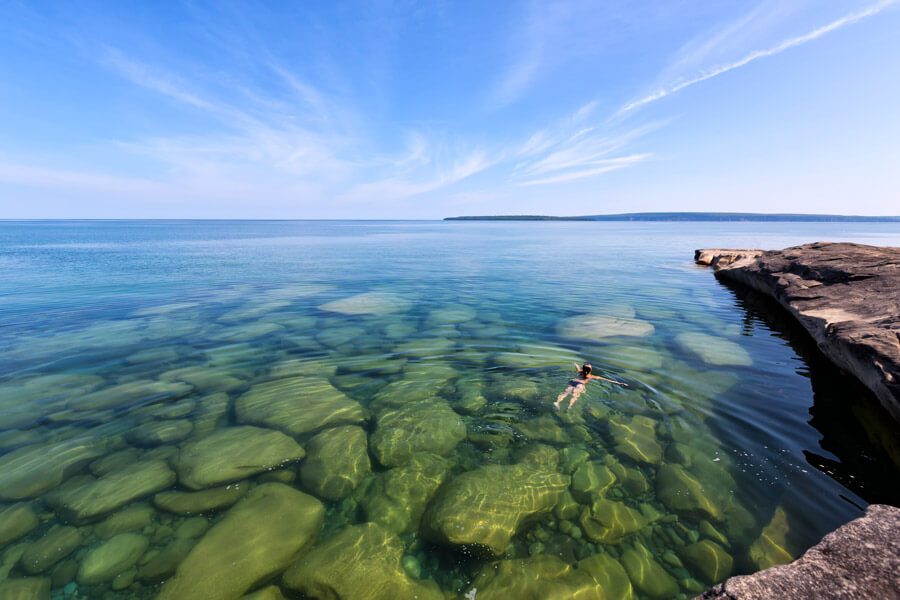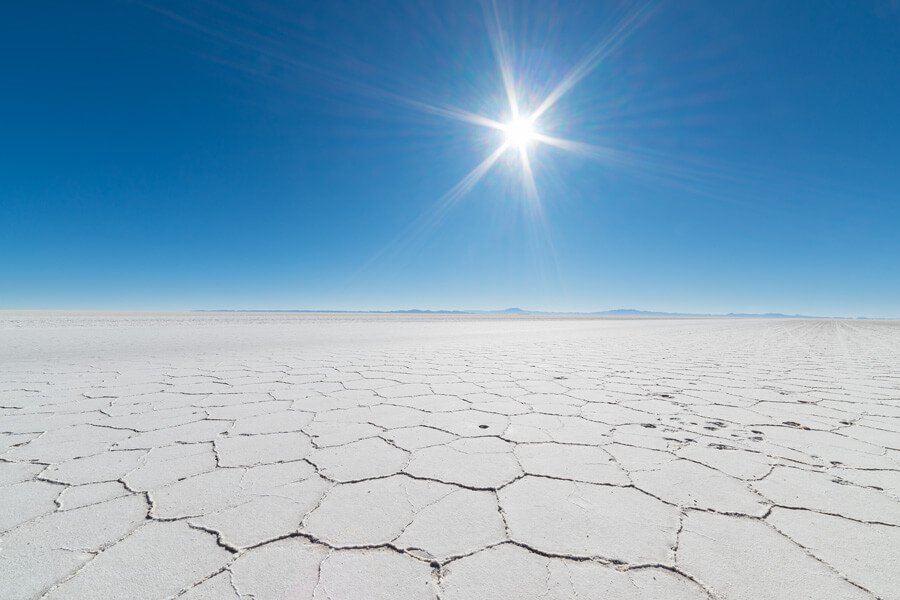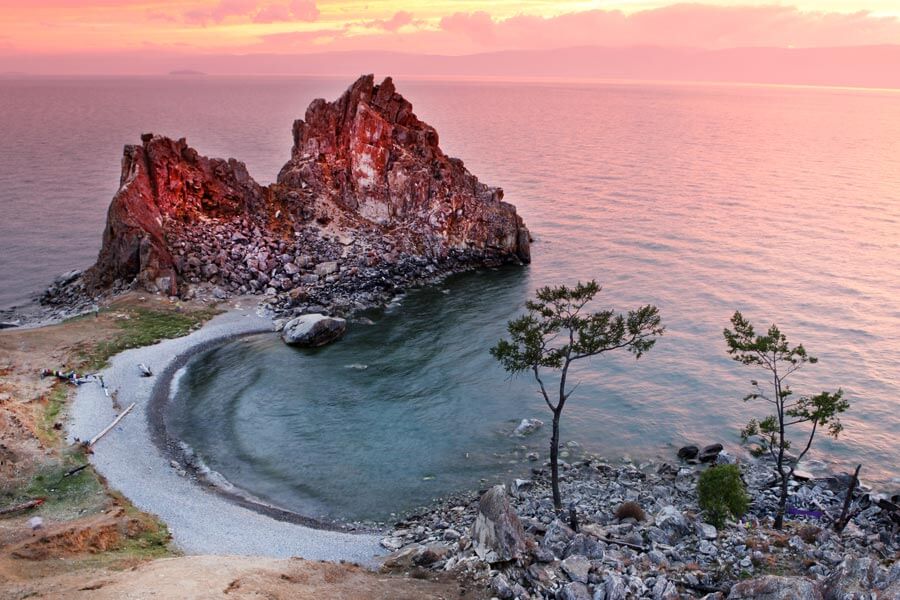7. THE SWEETEST

Endless crystal clear water – In terms of surface area, Lake Superior in the USA/Canada is the largest freshwater lake in the USA. With approx. 82,100 km², it is almost as large as Austria. Around 52,000 km² of the lake’s surface lies in the USA, the rest in Canada. It is the most Northern of the five largest lakes in North America and is blessed with the best water quality, as barely any industry has been established on its shores. Its name comes from French explorers from the 17th century. They christened it “Le Lac Supérieur” (upper lake), because it lies above Lake Huron.
6. THE HIGHEST

Andes glacier panorama – with 8,300 km² Lago Titicaca, on the high plains of the Altiplano between Peru and Bolivia, is not only the largest lake in South America, almost as large as Corsica, but at approx. 3,800 m above sea level it is also the highest-lying navigable lake on earth. The 50 floating reed islands are just as unique. Around 2,000 descendants of the Uros still live traditionally on the islands as they did at the time of the Incas.
5. THE MOST RELAXED

Come down without going under – The Dead Sea between Israel, Jordan and the West Bank is known for its bearing power. Here you really can simply float. That’s no surprise with up to 33 % salt content. Presumably the safest lake in the world for non-swimmers it is also very popular as a wellness oasis: the lake’s minerals are supposed to have healing properties. At the Northern point, the Dead Sea lies 420 m below sea level and is thus the lowest-lying lake on earth.
4. THE SALTIEST

Mysterious salt pan – with approx. 10,600 km², the Salar de Uyuni in Southwest Bolivia is the largest salt lake on earth, however only in the rainy season from December to January. At this time the 10,000 year-old salt pan fills ankle or knee-high with rain and forms the largest natural mirror in the world. During the dry season, the lake appears as though frozen – blindingly light during the day and ice cold at night. There is hardly any life here apart from a few truckers and adventurers on the white pistes. Its depth remains a mystery. Under the 30 m thick salt crust, there are supposedly a minimum 220 m to the lakebed.
3. THE DRIEST

Wavering Down Under – With 9,690 km² Lake Eyre in South Australia is the largest lake on the fifth continent. However, the volume fluctuates greatly depending on the season: in the rainy season, the Cooper Creek and Warburton River feed the lake, but how much water reaches the deepest part of Australia depends on the strength of the monsoon. Approximately every three years the water level rises to 1.5 m and every ten years up to 4 m. The lake is only completely full every 25 years on average. Curiously, there is nevertheless a yacht club on Lake Eyre
2. THE MOST VALUABLE

Home to black gold – The Caspian Sea on the border between Europe and Asia is by far the largest saltwater lake on earth. Its surface is currently estimated at 386,400 km², but it is shrinking dramatically! At the beginning of the 1930s the lake’s surface was around 420,000 km².150 various species of fish bustle around in this lake, which is up to 995 m deep, including the sturgeon – producer of caviar. Even more black gold lures on the seabed: geologists suspect there are up to 50 billion barrels of crude oil reserves below and beyond the Caspian Sea.
1. THE MOST EXTREME

Mega superlative – The 31,492 km² large Lake Baikal in Eastern Siberia is the greatest record holder of all the lakes in the world. At approx. 25 – 35 million years old, it is the oldest; at 1,642 m it is the deepest; and with a volume of 23,600 km³ it is the largest natural freshwater reservoir. Depending on the time of year, the temperature in this region sways between -50 and +20 °C. Translated, Lake Baikal means “rich lake” and not without reason: its unique ecosystem is home to more than 1,700 types of flora and fauna. Many of which can only be found here. In 1996 the Baikal region was added to the list of UNESCO world heritage sites.
